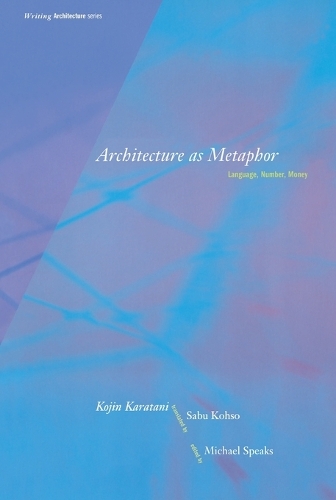
Architecture as Metaphor: Language, Number, Money
(Paperback)
Publishing Details
Architecture as Metaphor: Language, Number, Money
By (Author) Kojin Karatani
Translated by Sabu Kohso
Edited by Michael Speaks
MIT Press Ltd
MIT Press
5th October 1995
United States
Classifications
Tertiary Education
Non Fiction
Cultural studies
720.1
Physical Properties
Paperback
246
Width 137mm, Height 203mm, Spine 11mm
340g
Description
One of Japan's leading literary critics, Kojin Karatani is perhaps best known for his speculative philosophical works that, ranging from Kant to Nishida to Wittgenstein and Derida, are the generic equivalent to what in the West is called "theory". Karatani's writings are examples of a distinctly non-Western theoretical tradition. In "Architecture as Metaphor", Karatani examines the relationship between archtecture and philosophy, literature, linguistics, city planning, anthropology, political economy, psychoanalysis and mathematics. Specifically, he tackles the recurrent "will to architecture", which he argues is the foundation of all Western thinking. In the three parts of the book, he shows the necessity of construction, deconstruction and complex, secular construction/deconstruction. Because the will to architecture is practically nonexistent in Japan, Karatani must affirm the architectonic, which he does in the first section using a method based on formalist/structuralist linguistics, anthropology, and mathematics. He then explores the limits of formalism by reading the work of Jane Jacobs, Gilles Deleuze, Felix Guattari and Gregory Bateson against city planner Christopher Alexander's model of trees and semi-lattices. Finally, Karatani pushes formalism to its limits by reexamining the deconstructive implications of Kurt Godel's incompletness theorem.
Author Bio
Kojin Karatani is a Japanese philosopher who teaches at Kinki University, Osaka, and Columbia University. He is the author of Architecture as Metaphor (MIT Press, 1995) and Origins of Modern Japanese Literature. He founded the New Associationist Movement (NAM) in Japan in 2000.
